FUNDING CUTS IMPACT CT HUMANITIES: Help CT Humanities navigate recent funding cuts and continue our vital work across Connecticut. All donations made to CTH will be matched dollar-for-dollar up to $50,000. Donate today!
News & Updates

Marquis de Lafayette’s 1824 Tour of Connecticut
Almost five decades after the United States declared independence, Congress extended an official invitation to Marquis de Lafayette to tour the country as “The Nation’s Guest.”
Read
Nathaniel Lyon: First US General to Die During the Civil War
Eastford’s General Nathaniel Lyon became nationally famous as the first US general killed during the Civil War.
Read
M. Jodi Rell: Connecticut’s 87th Governor
As the second female governor of Connecticut, Jodi Rell faced struggles but helped the state stabilize after controversy and corruption.
Read
Connecticut State Seal and Arms
Connecticut has both an official state seal and state coat of arms that both include the state motto, “Qui Transtulit Sustinet.”
Read
Charles W. Morgan: New England’s Last Surviving Wooden Whaling Ship
As the last surviving wooden whaling ship of New England, the Morgan is representative of a typical 19th-century whaling vessel.
Read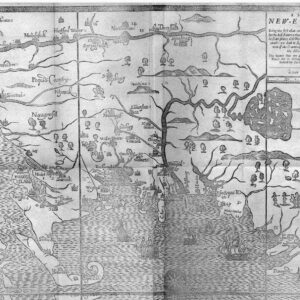
Edward Hopkins: Connecticut’s 2nd Governor
Edward Hopkins (1600–1657) was an influential figure in the early history of the Connecticut Colony, serving multiple terms as colonial governor.
Read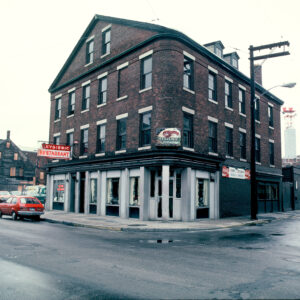
New London’s Hygienic Art Building
Located at the corner of Bank and Golden Streets, the Hygienic structure is an integral part of New London’s architectural history.
Read
Martha Minerva Franklin: Breaking Barriers for Black Nurses
An activist for Black nurses in the early 20th century, Martha Minerva Franklin worked to end discrimination and secure equal rights for her profession.
Read
“Legalized Piracy”: Connecticut’s Revolutionary War Privateers
American colonists employed privateers as part of the military effort against the British during the American Revolution.
Read
The Explosion of the Redding Baptist Meeting House
The explosion of Redding’s Baptist Meeting House provides a glimpse of the various arguments and conflicts about slavery swirling in one community before the Civil War.
Read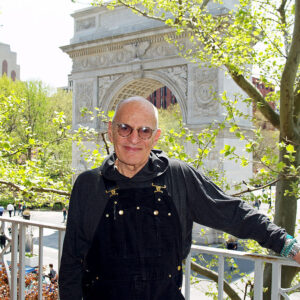
Larry Kramer: Gay Rights and HIV/AIDS Activism
Larry Kramer’s impactful literature and advocacy endeavors altered negative national perceptions to significantly improve AIDS health policies.
Read
Ethel Collins Dunham: Pioneer in Pediatrics
A student and professor of medicine, Dr. Ethel Collins Dunham devoted her life to ensuring the care of children throughout the early and mid-20th century.
Read
Connecticut History Day 2025: Rights and Responsibilities in History
Connecticut’s people have taken on responsibilities to establish state and national rights through the courts, protests, and everyday acts.
Read
Middletown’s Arrawanna Bridge
Throughout much of the 20th century, the Arrawanna Bridge played a key role in Middletown’s transportation network, carrying traffic from Berlin Street to Newfield Street.
Read
Jonathan Trumbull’s Lebanon War Office: The “Pentagon of the Revolution”
Jonathan Trumbull’s War Office in Lebanon functioned as headquarters for Connecticut’s Council of Safety from 1775 to 1783.
Read
Sarah Harris Fayerweather
Sarah Harris Fayerweather was a Black activist and abolitionist who fought for school integration in the early 19th century.
Read
Philip Johnson’s Glass House
Architect Philip Johnson’s Glass House in New Canaan, Connecticut is considered a masterwork of modern American architecture.
Read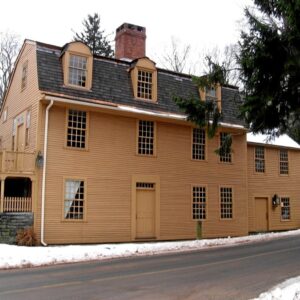
Thankful Arnold’s House
The Thankful Arnold House helps visitors explore the lives of women under the constraints of English Common Law during the early 19th century.
Read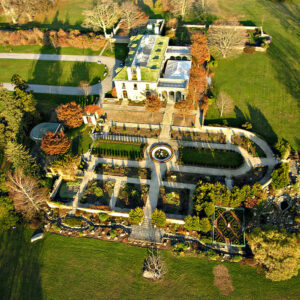
Battle of Goshen Point
The Battle of Goshen Point proved an important victory for America’s small gunboat fleet over a larger and more powerful British force.
Read
Navigating Connecticut Safely: The Green Book’s Role in African American Travel
In the mid-20th century, during the era of Jim Crow, the Green Book helped African American travelers find safe restaurants, hotels, gas stations, and other businesses while on the road.
Read
The Henry Whitfield House
The Henry Whitfield House (home to the Henry Whitfield State Museum) is only Connecticut’s oldest house and the oldest stone house in New England.
Read
Ridgefield’s Keeler Tavern
Keeler’s tavern had only served travelers and locals before Ridgefield played host to the only inland battle fought in Connecticut during the Revolutionary War.
Read
Connecticut’s Valley Forge: The Redding Encampment and Putnam Memorial State Park
As the 1778-79 winter quarters for a division of the Continental army, Putnam Memorial State Park is sometimes referred to as “Connecticut’s Valley Forge.”
Read
New England Society for Psychic Research: Connecticut Paranormal Investigators Leave Legacy of the Occult
A fascination with haunted houses, spirits, and demonology led Ed and Lorraine Warren to establish the New England Society for Psychic Research (NESPR) in 1952.
Read
Woodstock’s Roseland Cottage
With its distinctive pink exterior, Roseland Cottage was built in 1846 in Woodstock and is an excellent example of Gothic Revival architecture.
Read
The Orrin Freeman House and the Spirit of ‘76
How did Higganum’s Orrin Freeman House end up with a large American Revolution-themed mural, the Spirit of ’76, on its side?
Read
L.D. Brown and Son Silk Mill: A Staple in Middletown’s South Farms District
With established factories in Mansfield and Middletown, Lewis Dunham Brown and his son, Henry Lewis Brown, were pioneers in the US silk industry.
Read
Abigail Hinman: Heroine of the American Revolution or Legend?
Allegedly defending her house during the American Revolution in 1781, New London resident Abigail Hinman made a name for herself as a patriot legend.
Read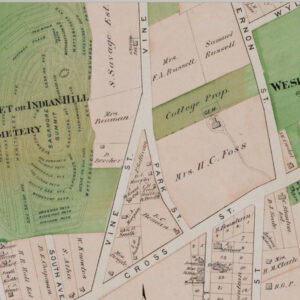
Middletown’s Beman Triangle: A Testament to Black Freedom and Resilience
One of the earliest and most politically active free Black neighborhoods in Connecticut emerged in Middletown in the late 1820s, the Beman Triangle.
Read
Rosa Ponselle: Meriden’s Famous Musical Daughter
Rosa Ponselle etched her name in history as the first American-born and American-trained singer to star with the Metropolitan Opera Company.
Read
Hebron’s Josephine Sophia (White) Griffing and a Vision for Post-Emancipation America
From before emancipation and the 13th Amendment, Josephine Sophie White Griffing of Hebron, Connecticut, was an ardent advocate for enslaved and free people.
Read
Thomas Short – Connecticut’s First Official Printer
Thomas Short became the Connecticut Colony’s first official printer in 1708, printing the laws and proclamations for the colonial legislature as well as the colony’s first book.
Read
John Warner Barber’s Engravings Chronicle Connecticut History
John Warner Barber chronicled 19th-century Connecticut history through his historical writing and hundreds of engravings—many of which still exist today.
Read
Connecticut Issues Same-Sex Marriage Licenses for the First Time – Today In History: November 12
On November 12, 2008, Connecticut issued its first marriage licenses for same-sex couples after Kerrigan et al. v. Commissioner of Public Health et al..
Read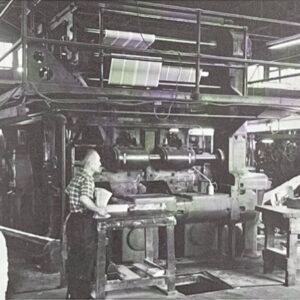
Charlton Publications: Song Lyric Printing Business to Major Player in the Comic Book Industry
By the late 1950s, Charlton Publications was home to some of the most accomplished artists and writers in the comic book industry.
Read
Linonian and Brothers in Unity: The Societies that Built Yale University’s Library
Two undergraduate literary societies, Linonian and Brothers in Unity, donated their large book collections to Yale’s nascent library.
Read
Early Connecticut Gas Light Companies
The first private gas light companies in Connecticut appeared just before 1850 in New Haven, Hartford, and Bridgeport.
Read
Connecticut College for Women: The State’s First All-Female Institution of Higher Learning
At a time when most universities accepted only men, Connecticut College for Women provided a liberal arts education for women.
Read
Illuminating Connecticut’s Past: The Bradley & Hubbard Legacy
Meriden’s Bradley & Hubbard Manufacturing Company was an industry-leading American manufacturer of kerosene lamps and metal household items.
Read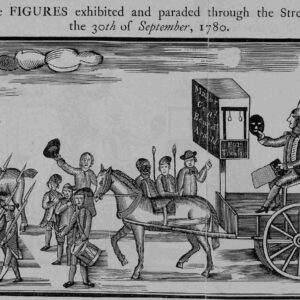
New London’s Tradition of Burning Benedict Arnold…in Effigy – Who Knew?
New London has a yearly tradition of burning an effigy of Benedict Arnold, the infamous Revolutionary War general turned traitor.
Read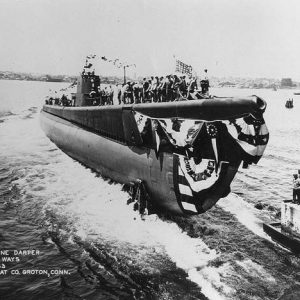
Electric Boat: From Innovation Trials to WWII Submarine Leadership
US submarines accounted for 63 percent of all Japanese ships sunk during WWII—Electric Boat’s vessels were responsible for a significant number of these successful outcomes.
Read
Black Loyalist Refugees: Toney Escapes During the Burning of Fairfield
The British burning of Fairfield during the Revolutionary War provided an opportunity for enslaved people to escape, including a man named Toney.
Read
Army-Navy “E” Award Honors Connecticut for Support Against the Axis Powers
During WWII, the US military bestowed 175 Connecticut war plants with the Army-Navy “E” Award for outstanding production contributions to the army and navy.
Read
Miss Porter’s School in Farmington
Miss Porter’s School, founded in 1843 in Farmington, is an elite, female, privately funded, 40-acre, educational institution in central Connecticut.
Read
Derby’s Osbornedale Farms, Frances Kellogg, and the Dairy Industry
A family legacy developed by Frances Kellogg, Derby’s Osbornedale Farms stands out for its impact on the Holstein-Friesian breed and contributions to the dairy industry.
Read
“Girl Pilot”: Mary Goodrich Jenson Breaks Barriers in Aviation and Journalism
Blending her aviation and journalism careers, Wethersfield’s Mary Goodrich Jenson pushed the boundaries of both fields.
Read
Photojournalist Margaret Bourke-White: “No Picture Was Unimportant to Her”
Margaret Bourke-White photographed some of the 20th century’s most significant people and events, but spent her later years in Darien, Connecticut.
Read
Jacques and Therese Makowsky and the Development of the Cornish Game Hen
In 1950, the Makowskys crossed a white Cornish cock with a White Plymouth Rock hen to produce a small hybrid that they patented as the Rock Cornish Game Hen.
Read
Oniontown: How Hard Work, Tall Tales, and Red Onions Built Wethersfield
Until the 19th century, the red onion trade supported Wethersfield as the first commercial town along the Connecticut River.
Read
Cornfield Point: Old Saybrook’s Forgotten Scenic Alcove
Cornfield Point, a rocky scenic area bordering the Long Island Sound, is often overlooked but is significant in the state’s maritime and prohibition histories.
ReadMore Articles




